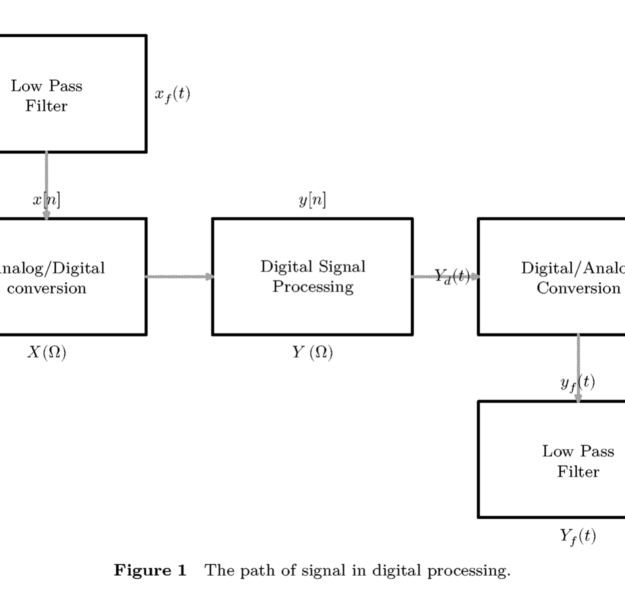Difference between revisions of "Flow Charts"
Jump to navigation
Jump to search
(Added some details) |
(new example) |
||
| Line 1: | Line 1: | ||
< [[MetaFun]], [[Graphics]] | < [[MetaFun]], [[Graphics]] | ||
| − | Context provides a charts module to create flow charts. For example | + | Context provides a charts module to create flow charts. |
| + | The details are in the [http://www.pragma-ade.com/general/manuals/mchart.pdf Charts uncovered] manual by Pragma. | ||
| + | There is also [http://www.im.ps.pl/context/?en Flowchart creater] to create flowchart code using javascript. | ||
| + | |||
| + | For example | ||
<context source="yes"> | <context source="yes"> | ||
| Line 24: | Line 28: | ||
</context> | </context> | ||
| − | The | + | The more sophisticated example: |
| + | |||
| + | <context source="yes"> | ||
| + | \usemodule[chart] | ||
| + | |||
| + | \setupFLOWcharts | ||
| + | [nx=5, | ||
| + | ny=3, | ||
| + | dx=2\bodyfontsize, | ||
| + | dy=2\bodyfontsize, | ||
| + | maxwidth=\textwidth | ||
| + | ] | ||
| + | |||
| + | \setupFLOWshapes | ||
| + | [framecolor=black, | ||
| + | background=color, | ||
| + | backgroundcolor=white, | ||
| + | ] | ||
| + | |||
| + | \startFLOWchart[DSP] | ||
| + | |||
| + | \startFLOWcell | ||
| + | \name{input} | ||
| + | \location{1,1} | ||
| + | \shape{44} | ||
| + | \connection[rl] {lowpass1} | ||
| + | \comment[t]{$x(t)$} | ||
| + | \comment[b]{$X(t)$} | ||
| + | \stopFLOWcell | ||
| + | |||
| + | \startFLOWcell | ||
| + | \name {lowpass1} | ||
| + | \location {2,1} | ||
| + | \text {Low Pass\crlf Filter} | ||
| + | \connection[bt] {adconv} | ||
| + | \comment[r]{$x_f(t)$} | ||
| + | \comment[l]{$X_f(t)$} | ||
| + | \stopFLOWcell | ||
| + | |||
| + | \startFLOWcell | ||
| + | \name{adconv} | ||
| + | \location{2,2} | ||
| + | \text{Analog/Digital\crlf conversion} | ||
| + | \connection[rl]{dsp} | ||
| + | \comment[t]{$x[n]$} | ||
| + | \comment[b]{$X(\Omega)$} | ||
| + | \stopFLOWcell | ||
| + | |||
| + | \startFLOWcell | ||
| + | \name{dsp} | ||
| + | \location{3,2} | ||
| + | \text{Digital Signal\crlf Processing} | ||
| + | \connection[rl]{daconv} | ||
| + | \comment[t]{$y[n]$} | ||
| + | \comment[b]{$Y(\Omega)$} | ||
| + | \stopFLOWcell | ||
| + | |||
| + | \startFLOWcell | ||
| + | \name{daconv} | ||
| + | \location{4,2} | ||
| + | \text{Digital/Analog\crlf Conversion} | ||
| + | \connection[bt]{lowpass2} | ||
| + | \comment[r]{$y_d(t)$} | ||
| + | \comment[l]{$Y_d(t)$} | ||
| + | \stopFLOWcell | ||
| + | |||
| + | \startFLOWcell | ||
| + | \name {lowpass2} | ||
| + | \location {4,3} | ||
| + | \text {Low Pass\crlf Filter} | ||
| + | \connection[rl]{output} | ||
| + | \comment[t]{$y_f(t)$} | ||
| + | \comment[b]{$Y_f(t)$} | ||
| + | \stopFLOWcell | ||
| + | |||
| + | \startFLOWcell | ||
| + | \name {output} | ||
| + | \location {5,3} | ||
| + | \shape{44} | ||
| + | \stopFLOWcell | ||
| + | |||
| + | \stopFLOWchart | ||
| + | |||
| + | \placefigure[here][fig:chart]{The path of signal in digital processing.} | ||
| + | { | ||
| + | \FLOWchart[DSP] | ||
| + | } | ||
| + | </context> | ||
| − | |||
[[Category:Graphics]] | [[Category:Graphics]] | ||
[[Category:Metapost]] | [[Category:Metapost]] | ||
Revision as of 17:00, 20 March 2008
Context provides a charts module to create flow charts. The details are in the Charts uncovered manual by Pragma. There is also Flowchart creater to create flowchart code using javascript.
For example
\usemodule[chart] \setupFLOWcharts[height=3\lineheight] \startFLOWchart[example] \startFLOWcell \name {flow} \location {1,1} \text {Flow} \connection [rl] {chart} \stopFLOWcell \startFLOWcell \name {chart} \location{2,1} \text {Charts} \stopFLOWcell \stopFLOWchart \FLOWchart[example]

The more sophisticated example:
\usemodule[chart] \setupFLOWcharts [nx=5, ny=3, dx=2\bodyfontsize, dy=2\bodyfontsize, maxwidth=\textwidth ] \setupFLOWshapes [framecolor=black, background=color, backgroundcolor=white, ] \startFLOWchart[DSP] \startFLOWcell \name{input} \location{1,1} \shape{44} \connection[rl] {lowpass1} \comment[t]{$x(t)$} \comment[b]{$X(t)$} \stopFLOWcell \startFLOWcell \name {lowpass1} \location {2,1} \text {Low Pass\crlf Filter} \connection[bt] {adconv} \comment[r]{$x_f(t)$} \comment[l]{$X_f(t)$} \stopFLOWcell \startFLOWcell \name{adconv} \location{2,2} \text{Analog/Digital\crlf conversion} \connection[rl]{dsp} \comment[t]{$x[n]$} \comment[b]{$X(\Omega)$} \stopFLOWcell \startFLOWcell \name{dsp} \location{3,2} \text{Digital Signal\crlf Processing} \connection[rl]{daconv} \comment[t]{$y[n]$} \comment[b]{$Y(\Omega)$} \stopFLOWcell \startFLOWcell \name{daconv} \location{4,2} \text{Digital/Analog\crlf Conversion} \connection[bt]{lowpass2} \comment[r]{$y_d(t)$} \comment[l]{$Y_d(t)$} \stopFLOWcell \startFLOWcell \name {lowpass2} \location {4,3} \text {Low Pass\crlf Filter} \connection[rl]{output} \comment[t]{$y_f(t)$} \comment[b]{$Y_f(t)$} \stopFLOWcell \startFLOWcell \name {output} \location {5,3} \shape{44} \stopFLOWcell \stopFLOWchart \placefigure[here][fig:chart]{The path of signal in digital processing.} { \FLOWchart[DSP] }
